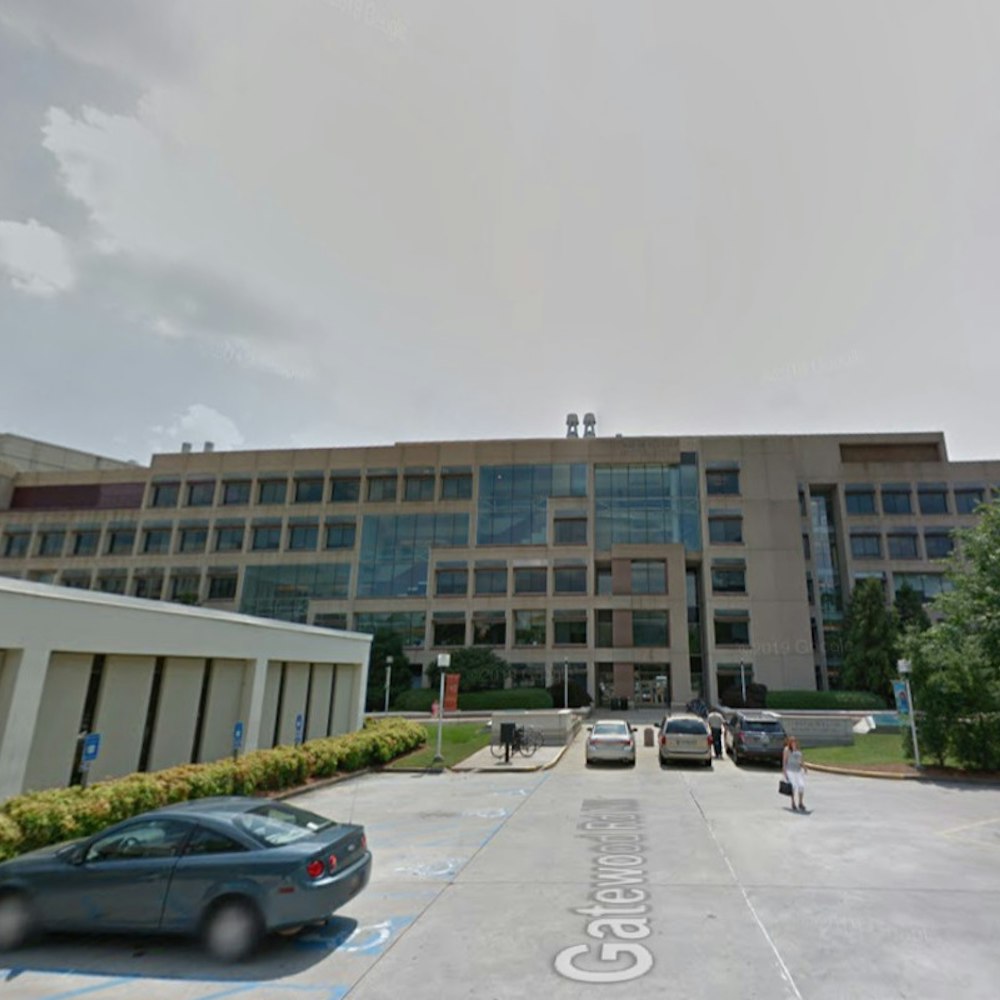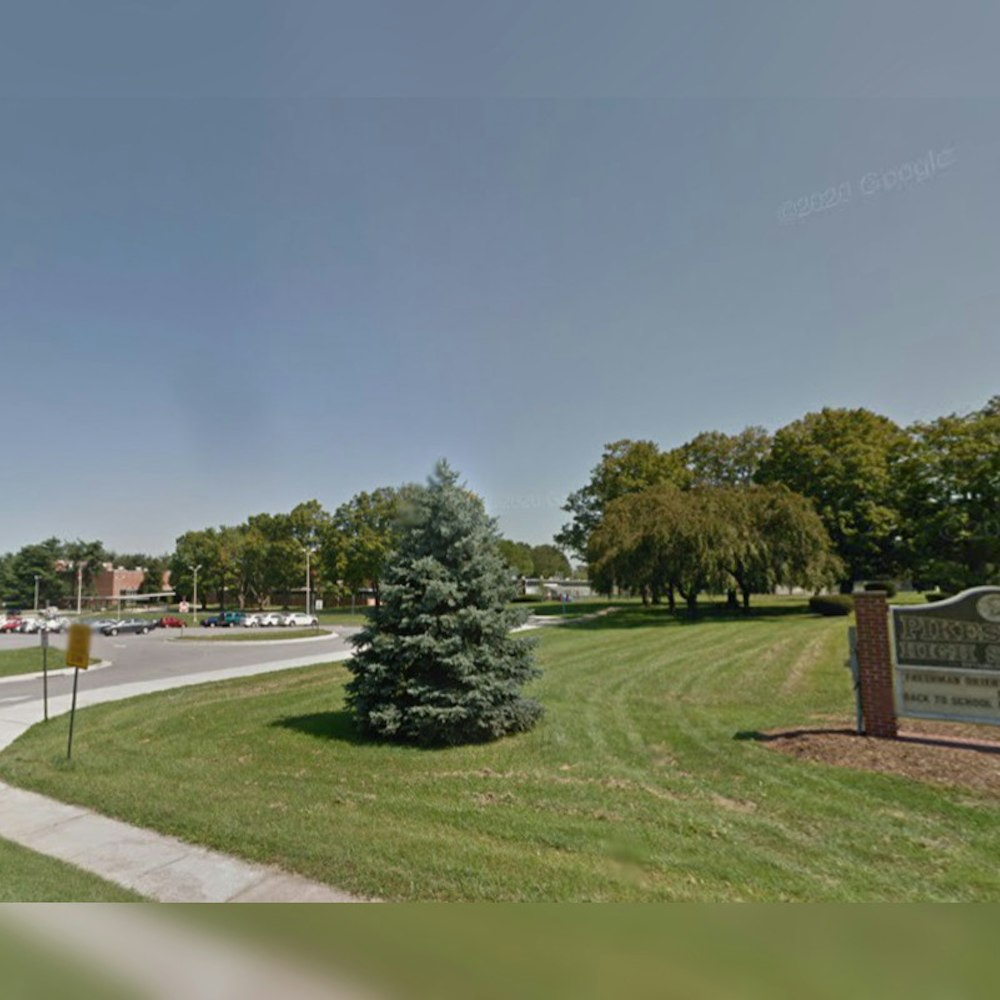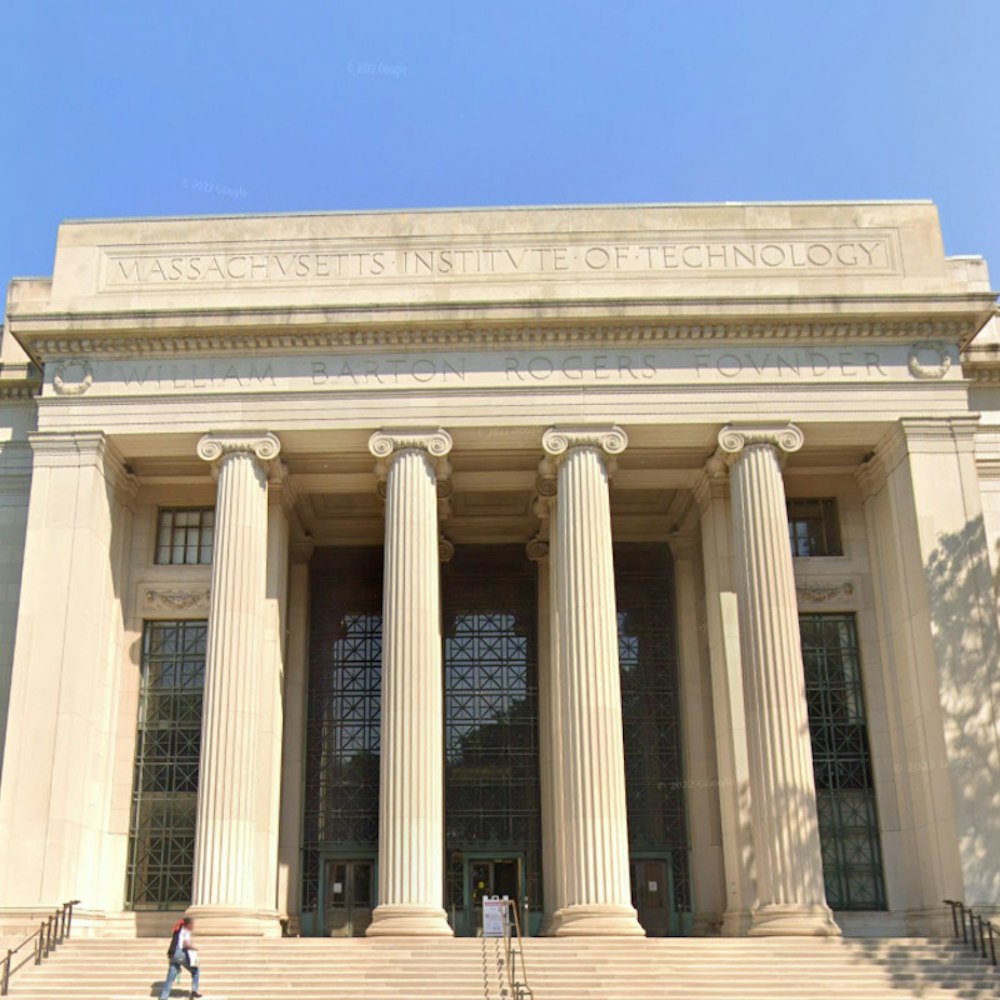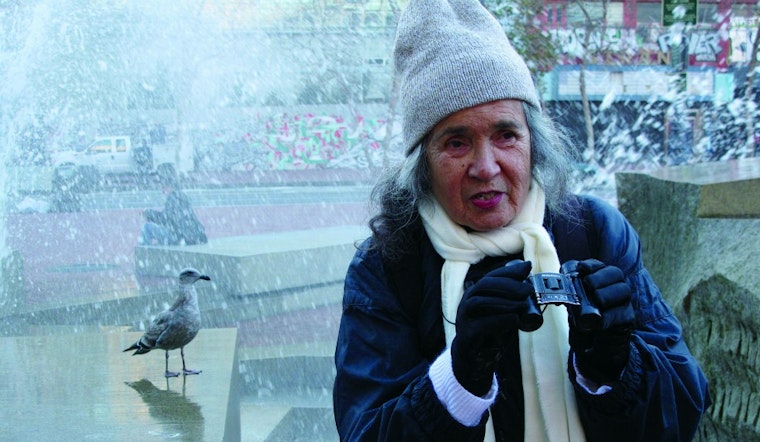
[Editor's note: On Tuesday, December 29th, the annual Christmas Bird Count from the Audubon Society will try to figure out what birds are living across the city. In honor of the event, we're publishing this feature from Central City Extra (PDF) that followed a solo census-taker in the Tenderloin area a couple years ago.]
A reluctant morning sun made it numbingly cold at U.N. Plaza Fountain one Thursday in late December, but that hardly daunted Mary Liz Harris. Bundled up with gloves and hat, she’s seated on a granite slab, binoculars in her lap, next to her backpack. A gaggle of white and brown sea gulls the size of chickens stand imperiously on taller slabs, ignoring the frothy waters and Carl’s Jr., yet ravenous for its fast-food refuse.
Harris is there to count these gulls and other birds and she’s ready for anything. Indeed, she yearns for surprise and adventure as part of the Audubon Society’s 113th Christmas Bird Count that takes place over three weeks in December and into January. This year’s count in San Francisco was two days after Christmas.
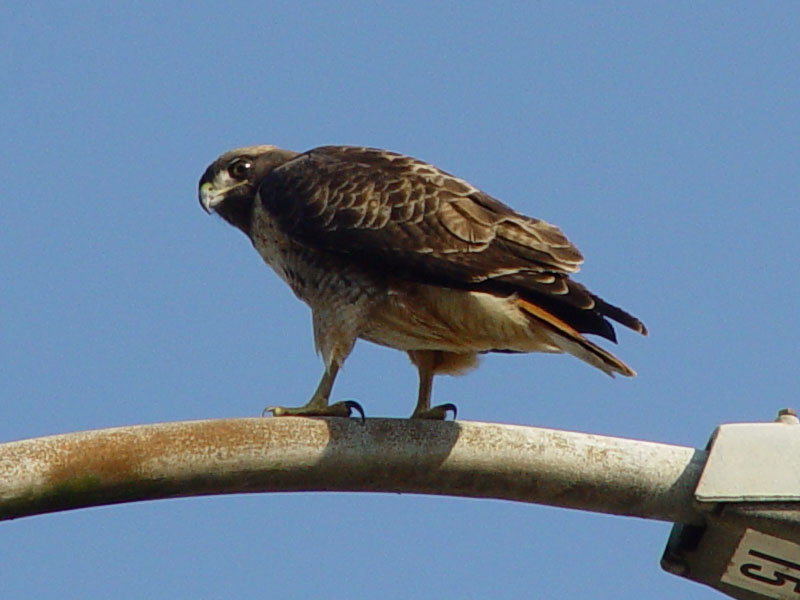 Red-Tailed Hawk:“They are always in the Tenderloin and you can see them often
on the cross of St. Boniface Church.” The red-tailed hawk is the
most common hawk in America among 14 species. It dives for
rodent meals at 120 mph. (Image via Wikimedia)
Red-Tailed Hawk:“They are always in the Tenderloin and you can see them often
on the cross of St. Boniface Church.” The red-tailed hawk is the
most common hawk in America among 14 species. It dives for
rodent meals at 120 mph. (Image via Wikimedia)
“We’re trying to get an idea of the kinds of species and populations,” Harris explains, slipping on the backpack, notebook in hand. “But the count’s not scientific.” Too much territory, too few counters. “Maybe you could get an accurate count if you had one person on every block counting at the same time.”
San Francisco, one of 1,739 bird census centers throughout the nation last year, has been sending avid volunteer Audubon counters into the city and northern San Mateo County since 1983. This year, 140 signed up to count birds, but only 112 showed, among them Harris, a 10-year veteran.
The Tenderloin has few parks with trees that birds love for nesting. It makes counting difficult and certainly not as riveting as, say, bird-rich Hunters Point Park or the Presidio that may yield 50 to 100 species.
“Nobody wants the Tenderloin,” says Harris, who lives on Turk Street. “I do it because it’s my neighborhood, and I always find surprises.” Younger people, who dominate the city’s dozen other larger groups of counters, walk too fast, she says, adding that she’s “a bit over the hill.” She’s 78.
Harris is the sole counter for the Tenderloin. Last year there were five. Her territory is Division Street to Van Ness Avenue to California, then east, taking in the Financial District. But she’ll only hit five areas, while counting along the way. Counters typically gravitate to water and parks but her district, light on parks, doesn’t abut ocean or Bay and hence fewer species. Her husband, Richard M. Harris, has the more interesting area, SoMa to AT&T Park, including the Embarcadero starting at the Ferry Building. She’ll join him later.
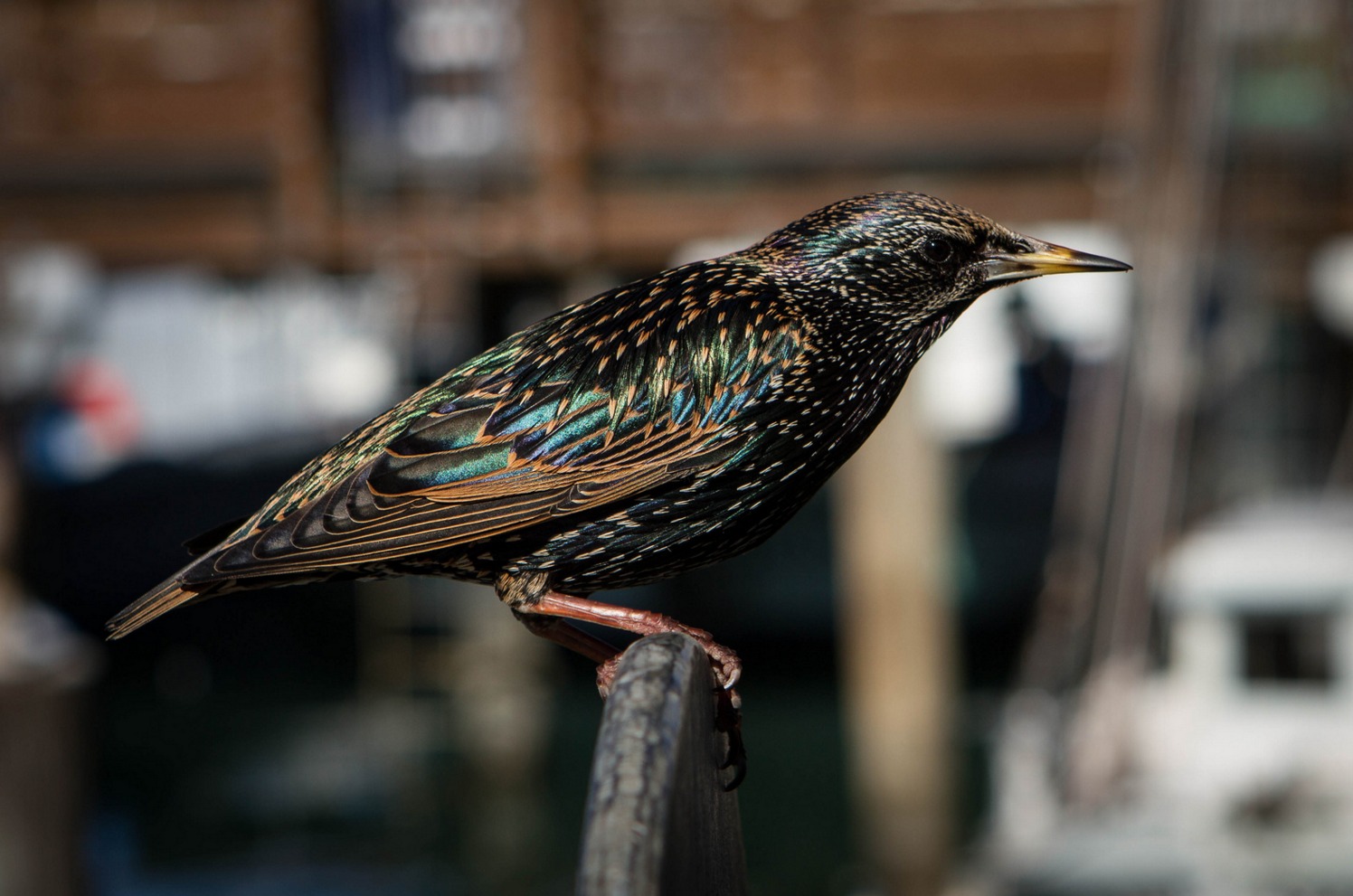 European Starling: “They came from England, I think, and I see more of them than I do red-winged blackbirds. They’re in Tenderloin trees and all over the city, iridescent, I love seeing them.” And what’s startling about starlings is their ability to absorb sounds from their surroundings — including car alarms and even human speech patterns — and vocalize the stuff into their own calls. They are part of research now into human language evolution. (Photo by Daniel Dionne/Flickr)
European Starling: “They came from England, I think, and I see more of them than I do red-winged blackbirds. They’re in Tenderloin trees and all over the city, iridescent, I love seeing them.” And what’s startling about starlings is their ability to absorb sounds from their surroundings — including car alarms and even human speech patterns — and vocalize the stuff into their own calls. They are part of research now into human language evolution. (Photo by Daniel Dionne/Flickr)
Dan Murphy, one of two Audubon members who compile the city’s grand totals, knows Harris’ value. “She’s a godsend,” he says, to cover downtown, what others derisively call the “pigeon route.” Volunteers counted nearly 61,000 birds in the city last year and 176 species, the tip of an iceberg of unknown size, yet helpful to gauge avian growth and decline. The TL, which was combined last year with much of SoMa, had 38 species then, but this year has shrunk drastically.
The 2012 count will eventually be 179 species and 55,247 birds, a drop but well within the city’s average 40,000-60,000 range. The record year was 1986 when schools of herring showed up as a “natural phenomenon” in the Bay behind what is now AT&T Park, laying their eggs on rocks, pilings and shore structures, practically spoon-feeding birds. [Ed. the last two years tallied 184 and 183 species respectively, with more details here.]
With gloved hands, Harris marks 50 gulls and eight pigeons on her 3-by-5 cards, then walks west. Her workday started at 8:30 a.m. when she left her Turk Street apartment, spotting eight sparrows on the way to U.N. Plaza. Over her 15 years in the Tenderloin, the count has been aided by birds she sees in the sky and perched outside her windows. She knows what to look for, but sometimes is surprised. Two years ago, she saw a black-crowned night heron in a tree that caught her breath. It was so far from the water.
“This is like a meditation for me,” she says, glancing up at building ledges as she walks, bent slightly to counter the backpack, a breeze jostling her shoulder-length gray hair. “And I think it’s good for older people.”
She tries not to count the same bird twice. But the birds move around. Already she has scores of western gulls and rock pigeons and the one yellow-rumped warbler she saw on her walk from Jones Street.
Ravens, Crows Gaining
Gulls have moved into the inner city because of our changing habits. Open city dumps used to attract huge flocks, count-compiler Murphy says. But the dumps got covered and fast food exploded. Urbanized birds now follow the people, swooping in where crumbs, buns and fries hit the pavement.
“Ravens and crows are growing by the greatest percentages,” says Murphy, a retired special education history teacher at Alameda County juvenile hall who once taught field ornithology at the California Academy of Sciences. Maybe 700 of each nest in the city now, he says, but he doesn’t know why, though they’re smart enough to follow any food source, and are adept nest raiders.
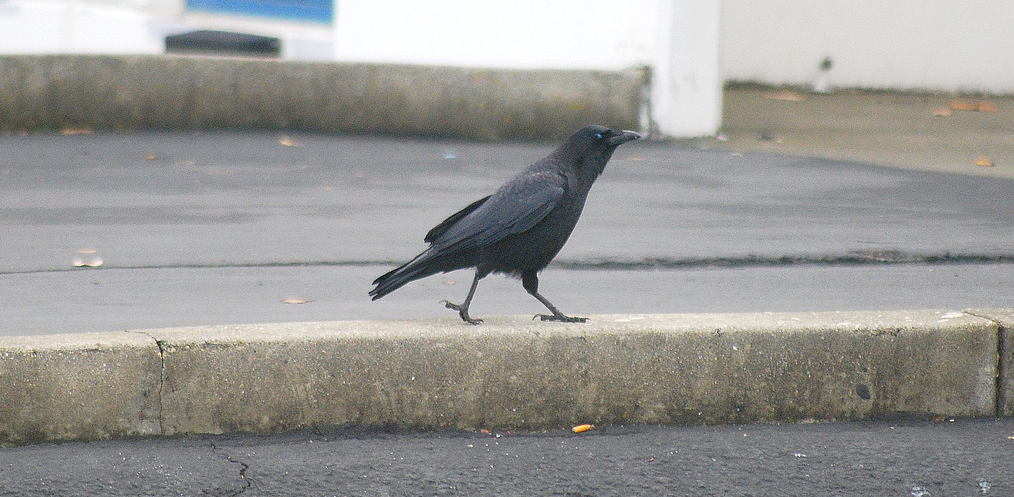 American Crow: “They’ve always been here and they’re recognized by their caw, caw sound. They’re easily confused with the larger ravens. Totally black. They’re gregarious. I see them on my fire escape.” Used for years as symbols for impending doom, crows are the smartest of all birds and have demonstrated toolmaking ability and self-awareness in mirror tests. Their total brain-to-body mass ratio is equal to great apes, slightly lower than in humans. (Photo by Paul Sullivan/Flickr)
American Crow: “They’ve always been here and they’re recognized by their caw, caw sound. They’re easily confused with the larger ravens. Totally black. They’re gregarious. I see them on my fire escape.” Used for years as symbols for impending doom, crows are the smartest of all birds and have demonstrated toolmaking ability and self-awareness in mirror tests. Their total brain-to-body mass ratio is equal to great apes, slightly lower than in humans. (Photo by Paul Sullivan/Flickr)
“But birds have really taken a hit in San Francisco,” Murphy says, “They’re on the skids.” As buildings supplanted open spaces, dove and blackbird populations plummeted about 50% from the 1980s, and quail almost went extinct.
Removing underbrush in city parks and fallen limbs — prized bird hangouts — takes a toll along with feral and domestic cats. Poisons outdoors, for rats in particular, also kill lots of birds. The survivors are “building-adapted birds” such as peregrine falcons, pigeons and cliff swallows, birds that treat skyscrapers like hills.
“We’ve taken more and more of the birds’ habitat as we build in the inner city,” says Mike Lynes, executive director of Golden Gate Audubon Society. “We’re faced with how we manage what’s left.” Data from the counts help determine the direction of the association’s advocacy.
Red-Winged Blackbirds New
Harris nears the northern edge of the plaza, opening to Leavenworth, and reminisces about being 9 years old and listening to birds outside her window in Chicago and singing back to them. More memorable, while getting her master’s in biology from the University of Illinois, was an ornithology class in 1954 when the professor took the students to a graveyard where birds were attracted to the vegetation. She’s been in solid with birds ever since.
“I’m a person of prayer,” Harris says, squinting as the glasses come up, “and to me this is like entering into their world. I’m moving between people, yes, but I’m shutting that out and being in their world.”
What’s new in the Tenderloin is redwinged blackbirds, Harris says. The first showed up in June.
“We used to only see them in Yerba Buena Gardens and Justin Herman Plaza,” she says. “They like water and reeds. But they can’t nest here. I don’t know what they eat.”
She stops at Hyde and Fulton and looks at the trees next to the Main Library as the sun is fully on nearby City Hall. There’s movement in the trees.
At the end of the plaza, in a forlorn tree, she spies her first bunch of redwinged blackbirds of the day. They’re singing. She brings the glasses down and starts counting them out loud, pointing her pen at each.
“I love those birds,” a vendor at his stall a few feet away says with a big smile. “Their song, well, it makes you laugh. I told them, ‘You’re a little loud for winter!’” “I love hearing their song, too,” Harris says, jotting down a number. She turns to cross Larkin, but at the curb is startled by frantic chirping that fills the air.
Red-winged blackbirds in the barren trees at the library are spooked. Some flutter off, flashing their colorful wings in flight, thrilling her.
“They’re scared,” Harris says, marking 12 on the card. “When they get excited, a hawk is around. I don’t see it. But they’re afraid they’ll be eaten.
“I love it when they’re active.”
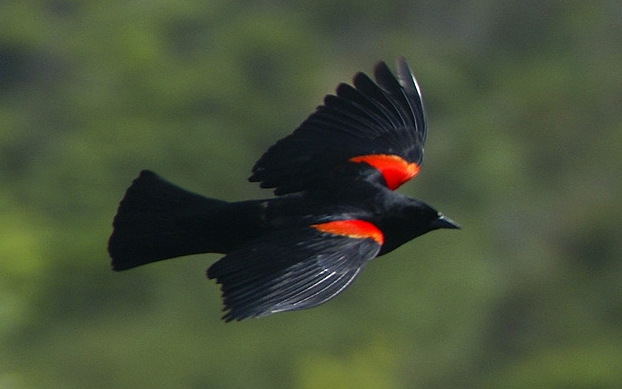 Red-Winged Blackbird: “I’m real happy to see more of it in the Tenderloin. It’s in U.N. Plaza and Civic Center and near the Asian Art Museum where trees are. When they’re together they make magnificent sounds and you can be serenaded.” It’s also the most abundant and best studied bird in America, some say. But during breeding season, watch out: Males swoop humans walking nearby. (Photo by David Baron/Flickr)
Red-Winged Blackbird: “I’m real happy to see more of it in the Tenderloin. It’s in U.N. Plaza and Civic Center and near the Asian Art Museum where trees are. When they’re together they make magnificent sounds and you can be serenaded.” It’s also the most abundant and best studied bird in America, some say. But during breeding season, watch out: Males swoop humans walking nearby. (Photo by David Baron/Flickr)
Among the red-wings, Harris counts three Brewer’s blackbirds, which thrive in the Tenderloin. “See?” Harris says, “This can be exciting. I think blackbirds are increasing.”
She counts 25 western gulls in the street, then looks north into the trees with the binoculars.
“See those eyes?” she says to no one in particular. “They’re white, and, oh, there’s a starling — two starlings in that group, male and female. Oh, I love that sound.” Starlings can imitate other bird songs and also whistle and warble.
“That makes nine species.”
She sees crows in front of the Main Library and at Civic Center Park playground, more that are on dirt ground. She admires their shiny blackness. Her cold hands, arthritis and backpack laden with three days of food in it (the Marines survival package she always carries “in case of an earthquake”) are forgotten burdens as she circles the block, making more counts of redwinged blackbirds, rock pigeons, western gulls and Brewer’s blackbirds after threading through a homeless encampment on the sidewalk.
“Pigeons are decreasing at City Hall,” she notes. “Of course, it’s against the law to feed them.”
With the binoculars she scans a second-story fire escape for house finches that a woman was feeding there last year. “She must have moved,” Harris says, seeing none, and meanders over to the Community Garden at McAllister and Larkin. This year she missed seeing any white-crowned sparrows at City Hall, too.
Harris says birding is a great activity “when you get old.” She sometimes spends an hour just watching a flock of birds. But with teaching Sunday school and singing in her church choir, lectures she attends, memberships in all the city museum associations, plus volunteering at St. Anthony’s and doing occasional tai chi, she hardly lacks for action. She believes that learning is something you do every day.
Raptors In The Hood
She has seen a lot of hawks in her 15 years in “the extremely interesting” Tenderloin. The first peregrine falcon she saw was sitting on top of the cross at St. Boniface.
“I was eating breakfast, looking out my kitchen window,” she recalled. “They were nesting at PG&E South of Market and people were taking work breaks — bird breaks — to watch them.”
Hawks, for all their predatory aggression, would likely stay away from the abundant gulls, repelled by their intimidating size. A peregrine falcon, though, is more likely to tear into one. But their speed can be literally breakneck. Six peregrines have died from collisions in seven years in the downtown area, according to the society. The last one was Dec. 7 near Market and Van Ness, very likely after colliding with a building.
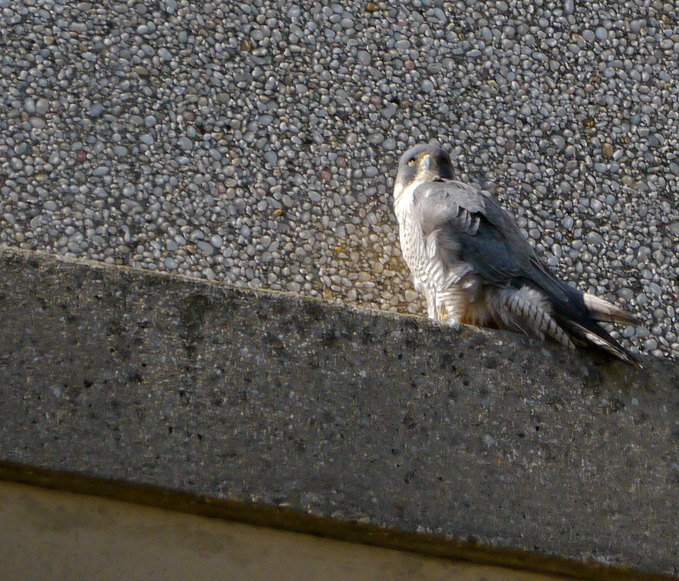 A peregrine falcon surveying the scene. (Photo by Christopher Eliot/Flickr)
A peregrine falcon surveying the scene. (Photo by Christopher Eliot/Flickr)
Diving at 200 mph, these raptors — the fastest member of the animal kingdom — are doomed when hitting clear glass they can’t see. City legislation in October 2011 required new buildings and renovated ones within 100 yards of the Bay or ocean to install all windows from ground level up to 60 feet high with “fritted” ceramic and silica specks that birds see and humans don’t.
Special Sightings
She has seen a Cooper’s hawk, too. “It’s funny,” she says, “all these special sightings have come from my apartment. Some years ago I saw a red-shouldered hawk, unusual for the Tenderloin. They’re looking for rodents, and they’re here for food.”
Red-tailed hawks are pretty common. She often sees a pair on the St. Boniface cross, “like their activities are being blessed.” And at various blessed times she has seen a great egret and double-crested cormorant when she was close to the Bay, and “more food for hawks” — barn swallows, red-masked parakeets (“they’re tourists down from the hill”) and the stunning black and white phoebe that “wears a tuxedo.”
“Oh, there are so many ways to amuse yourself in the Tenderloin,” Harris sighs. “You don’t have to shoot drugs and drink. There are simple gifts.”
Harris’ trek leaves out a lot of territory. It’s an established route and takes in the most likely places to see birds. Ignored is the small garden adjacent to the temporary YMCA on Golden Gate Avenue. In October, The Extra ran a picture of a garden resident, Maxine the hummingbird, but Harris won’t see her on this round, though eager to add species.
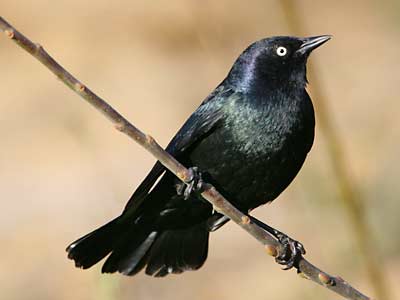 Brewer's Blackbird: “Very common in the Tenderloin and you can tell them from the red-winged. The males are purplish and the females brownish. They’re also found all over the city — very successful at living — and are gregarious.” They are the West’s version of the grackle but striking bright yellow eyes make it spooky and its raspy song isn’t pleasant.
Brewer's Blackbird: “Very common in the Tenderloin and you can tell them from the red-winged. The males are purplish and the females brownish. They’re also found all over the city — very successful at living — and are gregarious.” They are the West’s version of the grackle but striking bright yellow eyes make it spooky and its raspy song isn’t pleasant.
Harris won’t be using any tricks to lure birds, either, as Dr. Harry Parker did in the Presidio during her second year counting. He played a recording of the winter wren’s song and some came flying. “I was assigned to him. It was wonderful.”
At the corner of Larkin and McAllister — “now, I’m really enjoying the sunshine” — she counts the “clacking” Brewer’s blackbirds on the opera blue railing near the garage and more of them strolling on the pavement, plus a dozen brown-headed cowbirds. “I’m very happy I walked to this gate,” she says.
At the Community Garden she picks up litter off the sidewalk and disposes of it in a nearby trash can. She points to a fuchsia plant that could attract hummingbirds and a purple bougainvillea, admires the verdant garden, counts two Brewer’s blackbirds, a pigeon and walks east on McAllister.
She talks about birds she hasn’t seen in the TL, among them the Townsend’s warbler, “spelled just like the street.” Its head is patterned in striking yellow and black. Like the Brewer’s blackbird, it’s a common visitor in the winter months. “But I’ve never seen one here.”
At the Turk and Hyde Mini Park she counts 25 more rock pigeons, “ropies,” she’s now calling them, a nickname she and her husband invented. They are shockingly “omnivorous.” She tells a droll story, without breaking a smile, about being on a bus near a woman looking out at a pigeon eating vomit in the street and exclaiming, “Only in San Francisco!”
Harris, over the years, has counted more than 70 species that have come to her fire escape, “and that’s pretty wonderful.”
At Turk and Leavenworth, she pauses to count four ropies while a brownand-white, leashed pit bull a few feet away stares at them coldly.
On Jones, coming up to the Tenderloin Police Station, Harris is momentarily staggered. Her heart is a-flutter. Up come the binoculars. She glimpses a mysterious bird in the tree right in front of her.
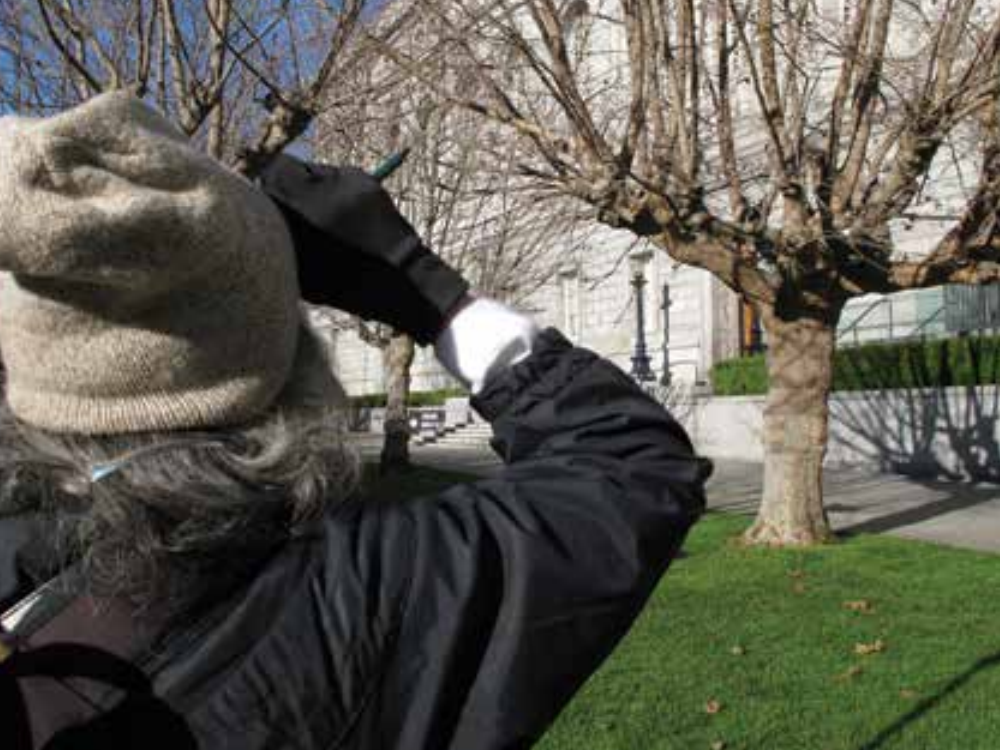 Mary Liz Harris sees movement in the trees by the Asian Art Museum and trains her binoculars on the spot—red-winged blackbirds, newbies in the neighborhood. (Photo by Tom Carter)
Mary Liz Harris sees movement in the trees by the Asian Art Museum and trains her binoculars on the spot—red-winged blackbirds, newbies in the neighborhood. (Photo by Tom Carter)
“I don’t know what it is. I’ll just stand here. Oh, he’s got yellow. There, you see?” She’s leaning forward, binoculars glued to her eyes. “Oh, a surprise! There, some black and white.” Absorbed in the aviary world, she drifts on thoughtless feet to the left.
“The first Townsend’s warbler in the Tenderloin — and in a Brisbane box!” she announces, also nailing the tree species in a way that would impress Edward R. Murrow. It’s a male. The warblers are easily found in Mission Dolores garden and Sue Bierman Park, but not in the Tenderloin. “So exciting. That’s why I do this work,” Harris says.
Peering into Boeddeker Park at the locked gate is a comedown, only a handful more ropies. The final species count: 11. Then she adjusts the backpack for her trek south to Yerba Buena Gardens to work a section of SoMa not covered with her husband, eventually spending 5½ hours on the project and walking nearly 3 miles.
But as she heads down Leavenworth, two blocks away she spots two red-tailed hawks flying near the old Federal Building, probably those she has seen on the St. Boniface cross. It brings her species total to 12.
A few blocks away, in the gritty first block of Turk, people idle near the 21 Club’s open door and 30 ropies mill about in the gutter, uncounted, eating abundant garbage in the sunshine before a police car pulls in and scares them off to who knows where.
And soon, in SoMa, things were continuing to look up for Mary Liz Harris. As usual.
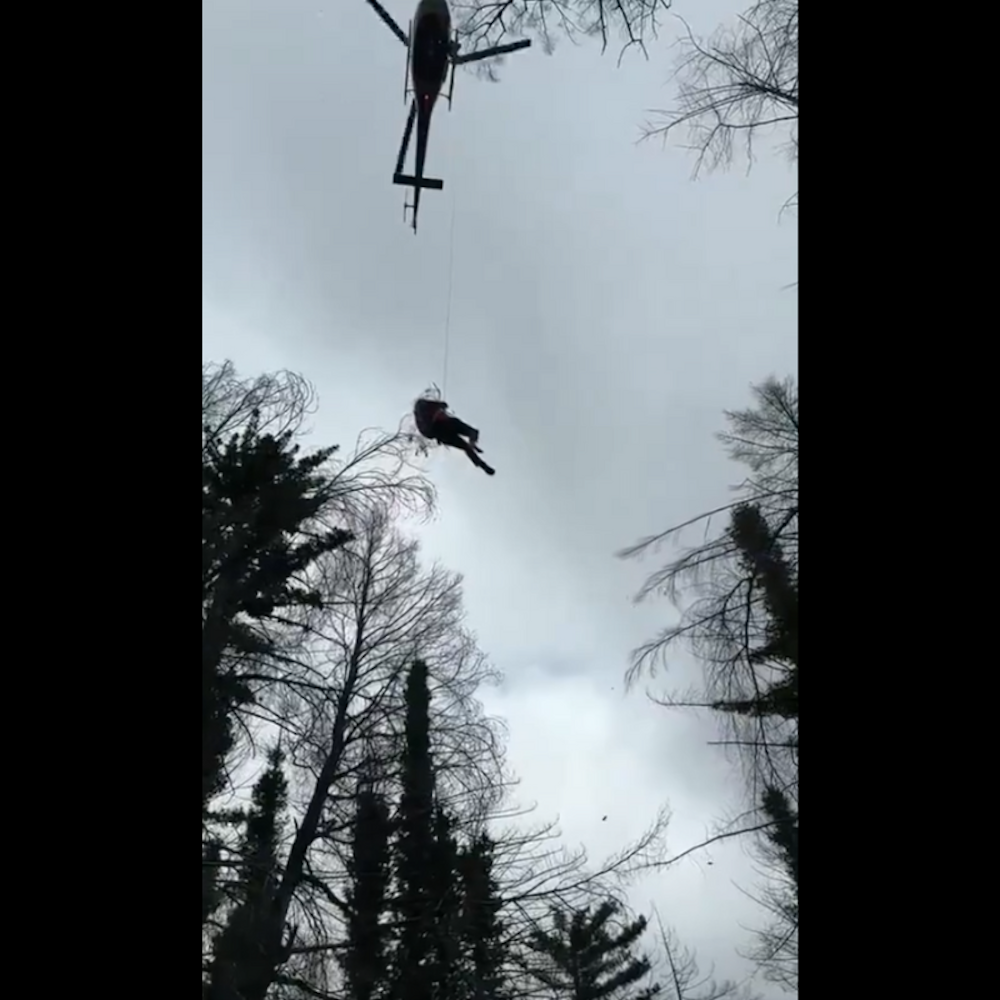

-2.webp?w=1000&h=1000&fit=crop&crop:edges)




